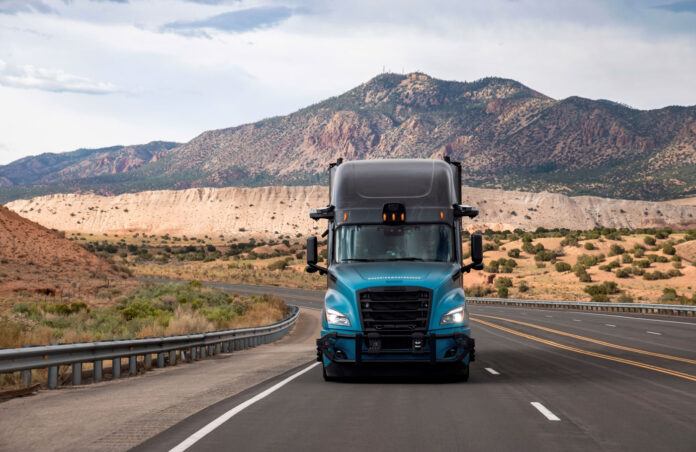What does the future of autonomous driving hold? That is what GIANENRICO GRIFFINI tried to establish in this question and answer session with CEO of Torc Robotics Michael Fleming, and head of autonomous technology group at Daimler Trucks Peter Schmidt.
In an interview that dates back to October 2019, you said you were in the phase of testing Class 8 autonomous driving on the public road. What stage are you currently in? What results have you achieved thus far?
Michael Fleming (MF): Since we last met at the North American Commercial Vehicle Show in Atlanta in 2019, we have been safely testing a fleet of autonomous trucks daily on public roads in the US. We are developing autonomous truck technology to navigate for long-haul, hub-to-hub transport – our target use case. Typical driving scenarios such as lane changes and complex merges have been tested intensively and have proven that Torc’s autonomous driving software can safely navigate on highways. Recently, we have expanded our features and are now running and demonstrating L4 autonomous trucks with enhanced capabilities in more complex scenarios on surface streets, ramps, and turns at controlled intersections.
Our routes have expanded to multiple states: Virginia, New Mexico, and Texas. Each area provides us with unique traffic and environmental conditions for testing. We have also expanded our simulation testing – allowing us to safely simulate thousands of traffic scenarios and reinforce capabilities on public roads.
Can you describe (in detail) your technical solutions for Class 8 autonomous driving? Is a high degree of redundancy a key pillar of your Level 4 autonomous driving strategy?
MF: The virtual driver is the Automated Driving System (ADS) which enables the vehicle to perform driving tasks. This includes software and hardware. Torc’s software stack is also known as the virtual driver. The automotive grade hardware includes computers, sensors, and other hardware necessary for the virtual driver to perceive the world around it, localize, and make behavioural decisions to perform driving tasks.
Peter Schmidt (PS): Yes, in our opinion, redundancy is a must for autonomous trucks. It is the only way to ensure maximum safety. Here we do not compromise. Our engineers at Daimler Truck North America have done a phenomenal job in the past few years, successfully developing the first scalable autonomous truck platform with critical safety systems. Based on Freightliner’s industry-leading flagship truck, the autonomous-ready Cascadia with redundant functions represents the foundation for autonomous trucking. This truck has a second set of critical systems, such as steering and braking, and continuously monitors and assesses the health of these systems. In case of interruption or errors, the newly developed redundant systems will be able to safely control the truck.



